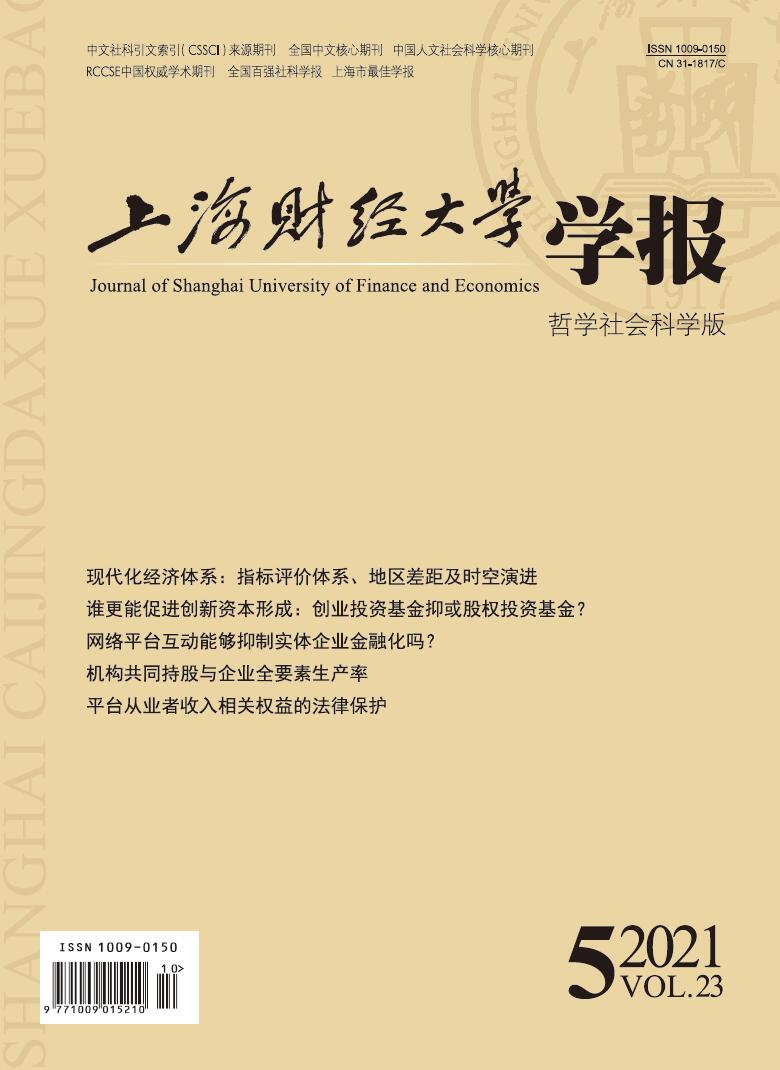The total factor productivity of enterprises is the core index to measure the performance of micro-enterprises, and it is one of the key indicators to measure the high-quality development of economy. Based on the 2007-2019 A-share listed company, this paper explores the impact of institutional joint ownership on the total factor productivity of enterprises from the three dimensions of whether there is institutional joint ownership, the degree of association with the industry and the proportion of institutional joint ownership. The study finds that institutional joint ownership can improve the total factor productivity of enterprises, and the higher the degree of connection and shareholdings, the more conducive to improving the total factor productivity of enterprises. Institutional joint ownership promotes enterprise R&D investment, reduces agency costs, and plays a governance role in the capital market. In state-owned enterprises and enterprises with higher levels of internal governance, institutional joint ownership can enhance the total factor productivity of enterprises more significantly. All results are still true after the robustness tests such as tool variables and placebo tests. From the perspective of institutional joint ownership, this paper discusses the impact of this emerging ownership model on corporate governance and the total factor productivity of enterprises, which is of great significance to the healthy development of capital market and the promotion of high-quality economic development. Compared with general institutional investors, institutional joint ownership can make up for the shortage of single institutional investors’ shareholdings, and the industry synergy, supervision and governance effect brought about by its information advantage and management experience will also affect the business development of enterprises, which can effectively improve the total factor productivity of enterprises in the process of maximizing benefits. Based on this, listed companies should realize that institutional joint ownership can play an active role in improving the total factor productivity of enterprises, and actively introduce and support the participation of mutual institutional investors in corporate governance. The regulatory authorities should attach importance to and guide the active participation of mutual institutional investors in the capital market, give full play to the advantages of joint institutional investors’ shareholdings, ensure the sustainability of institutional joint ownership, create a favorable investment environment, gradually improve the level of joint institutional investors’ shareholdings, strengthen supervision and performance appraisal, further standardize the market, guide institutional joint ownership to play a role in the new round of mixed ownership reform of state-owned enterprises, and stimulate the development vitality of state-owned enterprises. With the help of this emerging ownership model in the capital market, we can construct a long-term mechanism to improve the total factor productivity, build a high-quality, high-efficiency and high-level capital market, and help China’s economic transformation and upgrading.
 / Journals / Journal of Shanghai University of Finance and Economics
/ Journals / Journal of Shanghai University of Finance and EconomicsJournal of Shanghai University of Finance and Economics
LiuYuanchun, Editor-in-Chief
ZhengChunrong, Vice Executive Editor-in-Chief
GuoChanglin YanJinqiang WangWenbin WuWenfang, Vice Editor-in-Chief
Institutional Joint Ownership and Enterprise Total Factor Productivity
Journal of Shanghai University of Finance and Economics Vol. 23, Issue 05, pp. 81 - 95 (2021) DOI:10.16538/j.cnki.jsufe.2021.05.006
Summary
References
Summary
Cite this article
Du Yong, Ma Wenlong. Institutional Joint Ownership and Enterprise Total Factor Productivity[J]. Journal of Shanghai University of Finance and Economics, 2021, 23(5): 81-95.
Export Citations as:
For
ISSUE COVER
RELATED ARTICLES




 5406
5406  6746
6746

